You
are receiving this because your address is subscribed at: www.jaunay.com/newsletter.html |
|
 |
| No: 70 |
December 2011
|
|
News Seminars There is no program in December and January. See the web site for the 2012 program. See the seminar program for more details and bookings. Adelaide Proformat will be closed 23 Dec 2001 to 22 Jan 2012 SA BDM Indexes to go online In a major development the SA Attorney General, John Rau, has consented to the SA Genealogy & Heraldry Society's request to provide these indexes online in addition to their availability in CD and print. State Records of SA website The online collection catalogue is currently not functional. Telephone the duty archivist 08 8204 8791 for support until the problem is fixed. Numbering systems in family history Last month we discussed pedigree charts and family sheets, the basic tools in genealogy. This raised a number of questions from readers and in particular the numbering systems used. Ahnentafel System Each system has its own shortcomings and the beautifully simple original scheme developed centuries ago is still the most popular and is used on pedigree charts. This system is called the Stradonitz [or Sosa-Stradonitz or Ahnentafel ahnen tafel = ancestor table] System and dates from 1676 when it was first used by Spanish genealogist, Jerome de Sosa. The main weakness of the system is that it only applies to the person (and their siblings) whose pedigree is being examined. The other weakness is that only a person's direct ancestors have a number. This weakness is not unique to this system. Its great strength is that everyone has an allocated number, even before they are located. The person whose pedigree it is, is number 1. Their father is No 2, their mother No 3, their paternal grandfather No 4, and so on. In this system, a person's father's number is always twice the person's number and his or her mother's number is twice plus one. That means you can easily assign a number to any direct ancestor. If the person you are looking at is #7 then you know their father will be #14 and their mother #15. |
In
this issue: |
|
Adelaide
Proformat Services
• Research |
| The Ahnentafel System simplicity resides in the fact that it is an ascending system working from the present back in time and as such reflects the process of a genealogist as they work out their family tree using first principles.
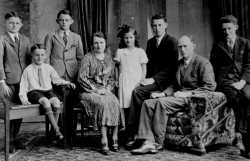 While
this system is seemingly limitless there is a problem in that if a
person appears more than once in a family tree each entry would have
its own number and therefore would lead to the duplication of records
including those of that person's ancestors. Of course this problem
is not unique to this system! While
this system is seemingly limitless there is a problem in that if a
person appears more than once in a family tree each entry would have
its own number and therefore would lead to the duplication of records
including those of that person's ancestors. Of course this problem
is not unique to this system!Register System The earliest recorded individual in this system is given the number 1. Each child in that family is then numbered in order of birth with lower-case Roman numerals (i, ii, iii, iv, and so on) and those whose lines are carried on in the work are also given an Arabic number. This system is used in the New England Historic Genealogical Society Register from which it gets its name. Whereas the Ahnentafel System is an ascending number system, the Register is a descending system because it starts with an ancestor and works forward in time. Thus you will often see listings with the following type of pattern:
The main problem with this system is that every time you locate a new generation back in time you need to renumber everyone. Nevertheless it is a system widely used in publications and especially those from the United States. Such a disadvantage is not a problem if you use a family tree program on your computer as it will automatically reassign the numbers to the printed reports. NGSQ System NGSQ represents National Genealogical Society Quarterly as published by the United States organisation, the National Genealogical Society and relates to the way the organisation publishes genealogical data. At first inspection it looks like the Register System and indeed is called the Modified Register System by some. It is also known as the Record System. The key difference is that every child including those without issue are given a number. The symbol + denotes those with issue:
A major disadvantage of this system has to be its complexity and in particular the problems revealed when a researcher wants to include a newly discovered descendant. Because everyone is numbered, this problem, shared by the Register System is far more of a prominent. 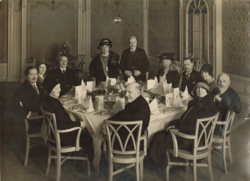 Henry System Reginald Buchanan Henry used this scheme in Genealogies of the Families of the Presidents in 1935. In this system, the progenitor or other individual is assigned the number 1. His first child becomes 11, his next child is 12. The oldest child of number 11 is No. 111, the next 112, etc. When Henry encountered families with more than nine children, he used the Roman numeral X for the 10th child, and then A, B, C for 11th, 12th and 13th children, etc. [With computers use the letters B, C, etc for the 11th and 12th children, rather than XI, XII etc and all will be correctly sorted.] The system can be expanded by using a prefix letter for each family that marries into the family being studied. The strength in this system is that you can immediately work out the position of everyone within their family. It is a very effective system to use with a computer.
d’Aboville System This is similar to the Henry System, except that each digit (or group of two digits for numbers larger than 9) is separated by a period. Thus the first child of No. 1 is 1.1; the 10th would be 1.10. The first children of the latter would be 1.10.1. Thus depicting the above list of Jones in the Henry and D’Aboville Systems would look like:
In the opinion of the writer, this system is the most appropriate and useful as it encapsulates much useful information and gives every person a number that identifies their relationship to everyone else in the chart. It lacks the weakness of every other descent system in that every person does not require renumbering if an earlier ancestor is located but rather just an additional number to the front of the string. If another child is discovered, then major changes in the numbering would have to be implemented! The writer uses this system in a modified form to accommodate distaff lines by adding a family prefix letter to the front. Thus the paternal line has the prefix A and the maternal line, B, the paternal grandmother's line, C, and the maternal grandmother's line, D and so on.
Many family historians attempt to accommodate the shortcomings of numbering systems with modifications. Some simple and some complex. The weakness in all such modifications is that they are not widely known and invariably create new problems. 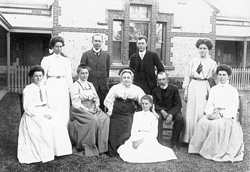 Eytzinger Method, Kekule, Sosa Method, and Sosa-Stradonitz Methods These are just alternative names for the Register System. Meurgey de Tupigny System The Meurgey de Tupigny System is a simple numbering method used for single surname studies that was developed for the Archives nationakes (France) in 1953 by Jaques Meurgey de Tupigny. It is virtually unknown outside western Europe but as with all things in research it is good to be aware of such schemes in case you, like the writer did, come across them chasing your own ancestry. In this system each generation is identified with an uppercase Roman numeral and like the preceding systems is a descending system.
de Villiers/Pama System This system exchanges the Roman numerals of the previous system for lower case letters of the alphabet. It is primarily a South African system having been promoted by the Genealogical Society of South Africa.
Numbering Systems in Genealogical Software Most genealogy software packages rely entirely on the computer to assign numbers to individuals in the database and this usually happens in the order the names are added to the database. As such they are of no use for any other work. Husbands are then linked to wives and parents linked to their children on the basis of these numbers. Most genealogical database programs will print out charts using the ahnentafel numbering system and some will allow you to print out your finished product using the other systems. If not, there are utilities that will help. Comparison of the numbering systems Examine the following family tree against the table. 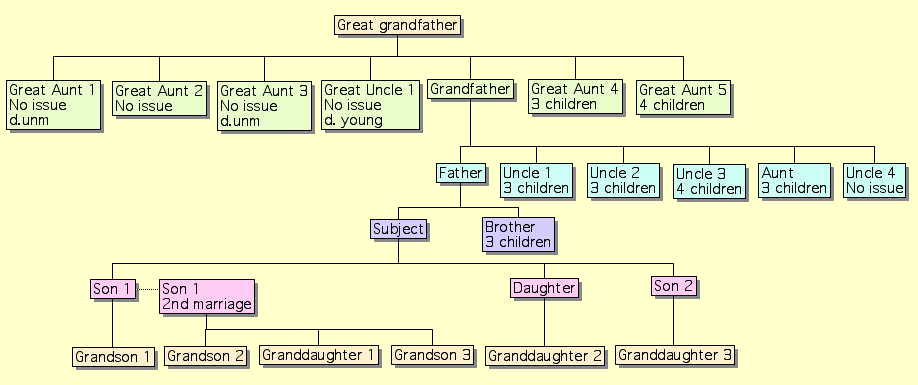
New books by Graham Jaunay available from Unlock the Past: For more information Just click on each book image. 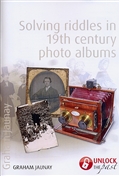 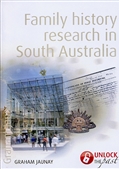
|
||||||||||||||||||||||||||||||||||||||||||||||||||||||||||||||||||||||||||||||||||||||||||||||||||||||||||||||||||||||||||||||||||||||||||||||||||||||||||||||||||||||||||||||||||||||||||||||||||||||||||||||||||||||||||||||||||||||||||||||||||||||||||||||||||||||||||||||||||||||||||||||||||||||||||||||||||||||||||||||||||||||
| To
unsubscribe send a blank email via the following link using the same
address you subscribed to: newsletter-leave@jaunay.com |
||||||||||||||||||||||||||||||||||||||||||||||||||||||||||||||||||||||||||||||||||||||||||||||||||||||||||||||||||||||||||||||||||||||||||||||||||||||||||||||||||||||||||||||||||||||||||||||||||||||||||||||||||||||||||||||||||||||||||||||||||||||||||||||||||||||||||||||||||||||||||||||||||||||||||||||||||||||||||||||||||||||